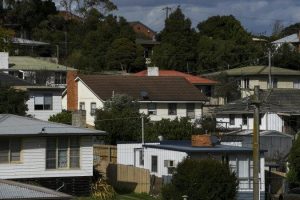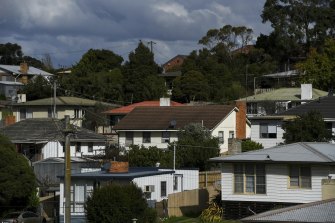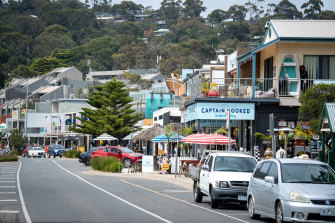Rural housing crisis could cause billion-dollar income hole

Rural Victoria will need more than 87,000 new homes in the next 15 years to tackle a housing shortage threatening to inflict major economic damage to the state if left unresolved.
New analysis shows Victoria stands to forgo up to $1 billion in gross regional product – total income from employment and business in a region – unless action is taken to tackle the severe undersupply of housing in many rural areas.
Housing supply is tight in regional Victoria, making hard to attract workers to fill employee shortages. Credit:Penny Stephens
The study by SGS Economics and Planning conveys strong potential for economic growth in regional Victoria, but says a lack of accessible housing is acting as a handbrake.
The housing shortage is already causing problems in many parts of regional Victoria where workers are unable to find affordable properties to rent or buy, so they can fill drastic workplace shortfalls.
Victoria’s hospitality industry is among those already hit hard this summer, with many businesses in tourism-dependent towns forced to reduce hours and run stripped-back services due to the scarcity of workers.
Many industries from healthcare to construction are also struggling to find employees, making it difficult to bounce back from the financial losses sustained during the coronavirus pandemic.
Many businesses have been forced to cut back their trading hours in popular tourism spots due to staff shortages. Credit:Eddie Jim
“There is no doubt that the lack of housing for skilled, unskilled and seasonal workers is holding back the development of individual businesses across rural parts of the state,” the report said.
“This translates to static population numbers or slow growth which, in turn, reduces the ability of country communities to retain a wide range of private and public services spanning retail, health and education.”
The report, commissioned by Rural Councils Victoria, recommends the state government commits to a rural worker housing program providing recurrent payments to those willing to build, own and operate rental housing to mitigate employee shortages.
It also identifies land withholding as a widespread issue in which property owners “drip-feed local markets” to keep profit margins high.
Towns like Lorne are struggling to find workers because of insufficient housing supply on the Surf Coast. Credit:Eddie Jim
The analysis studied conditions in 38 local government areas across the state, excluding Melbourne and highly urbanised regional councils.
The economic cost of failing to deliver sufficient housing in rural Victoria would range from $200 million if 10 per cent of workplace positions cannot be filled, rising to $1 billion if 50 per cent of the workers cannot be found.
But the report warns rural Victoria’s housing market is not well-placed to meet the need for 5800 new homes per year.
While the population has decreased in some rural council areas, many others, particularly those near Melbourne, were already experiencing population growth before the pandemic.
Rural Councils Victoria chair Mary-Ann Brown, who is a councillor at the Southern Grampians Shire, said the pressure on housing had since accelerated.
“Houses are selling very quickly,” she said. “In our local area prior to the pandemic there was very little rental housing. It’s worse now.”
Cr Brown said in some instances employers were resorting to building accommodation for workers to plug employment shortages. But she said it was difficult to achieve appropriate development in rural Victoria.
“Often you’re looking at small-scale developments which are not attractive to the larger property developers.”
The report said while councils were required to plan for a 15-year ongoing residential land supply within their municipalities, they were hampered by financial and staffing constraints.
It also recommends rural councils share in revenue gained through the windfall gains tax, which is applied to land that becomes more valuable through government rezoning.
Regional Australia Institute chief economist Kim Houghton said over the past 18 months more people were flowing out of Melbourne than moving in – putting an end to a long-running trend.
“A lot of those people are going to regional Victoria,” Dr Houghton said. “That’s been a consequence of this social and structural change over the past 18 months.”
The Morning Edition newsletter is our guide to the day’s most important and interesting stories, analysis and insights. Sign up here.
Most Viewed in National
From our partners
Source: Read Full Article



